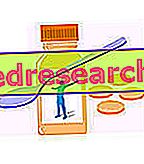Related articles: Breast lumps
Definition
Breast nodules can be found in various diseases affecting the breast. Typically, these formations are distinguished into benign nodules and malignant tumors.
Breast nodules may have unilateral or bilateral localization, that is, they may affect only one breast or both. Their presence can cause pain and may be accompanied by other signs: nipple discharge (clear, milky or haematic), skin changes (such as erythema and lymphedema with an "orange peel" appearance), a sense of tension and changes in shape of the breast.
The nodules can be found on palpation or self-examination of the breast and, in some cases, are visible to the naked eye.
Benign and malignant breast lumps
In most cases, breast lumps are benign in nature and derive from fibrocystic changes, inflammation and infections; however, breast cancer is the most feared cause.
- Benign nodules have clear contours and are mobile, ovoid or roundish. Depending on their origin, these lesions can tend to be solid (ie they have a hard consistency), adipose (soft) or liquid (cysts).
- Malignant nodules, on the other hand, have poorly defined contours (infiltrate the surrounding gland) and are not mobile. The most advanced breast cancers almost always result in a retraction of the overlying skin, with a change in the shape of the breast and an accentuation of the cutaneous signs caused by the lymphedema. The presence of satellite nodules and lymphadenopathy is indicative, then, of tumor spread.
To differentiate benign from malignant lesions, therefore to exclude the presence of a breast nodule of neoplastic origin, it is always indicated to undergo a series of tests.
In particular, the symptoms to report to your doctor are:
- Perception of one or more hard nodules in the breast or armpit;
- Change in the size or shape of the breast;
- Skin changes or nipple changes (such as, for example, unusual secretions or rashes in the surrounding area);
- Appearance of a skin dimple.
Possible causes
- Fibroadenomas are benign solid nodules, similar to small balls with sharp and typically painless and mobile contours (these lesions can be moved under the skin with the fingertips). Usually, these formations develop in young women and their mobility in the breast helps to distinguish them from other nodules of the breast.
- Fibrocystic mastopathy is the most common cause of breast lumps. It is a benign dysplasia (that is, an abnormal development) that is quite widespread in women, especially in the age group between 30 and 50 years. On palpation, the nodules are roundish and often appear as agglomerates in both breasts or as well defined, mobile masses without signs of skin retraction. In fibrocystic mastopathy, the nodules increase in volume and cause tenderness in the days preceding the arrival of the menstrual flow; the sense of swelling and tension in the breast tends to disappear, then, at the end of menstruation.
- Other fibrocystic changes that have no neoplastic significance include adenosis (nodules of hard consistency and variable size) and cysts (rounded formations with a liquid content). Other nodules may be due to ductal ectasia and mild hyperplasia.
- Breast infection (mastitis) causes intense pain, redness and swelling; an abscess resulting from this process can produce an appreciable nodule. Breast infections are quite rare; in general, they are found in the puerperium, after a penetrating trauma or a surgical intervention.
- The breast abscess is characterized by a painful nodule which tends to gradually increase its size. The skin of the affected area is red, hot and with an "orange peel" appearance. Sometimes, fever is associated with chills and general malaise. The breast abscess is more frequent in the period of breastfeeding and represents a complication of mastitis.
- In the post-partum phase, a galactocele can also appear, ie a cyst with a rounded, mobile and milk-filled shape.
The malignant tumor of the breast is manifested by a hard nodule, not well delimited, adherent to the skin or to the surrounding tissues. Deviations, retraction or flattening of the breast or nipple profile, with or without blood or serous secretion, can also be evident. Other symptoms associated with breast cancer include redness and "orange peel" appearance of the overlying skin, breast tenderness and axillary lymphadenopathy.

Possible Causes * of breast lumps
- Breast cancer
- Ductal ectasia
- Mastitis



